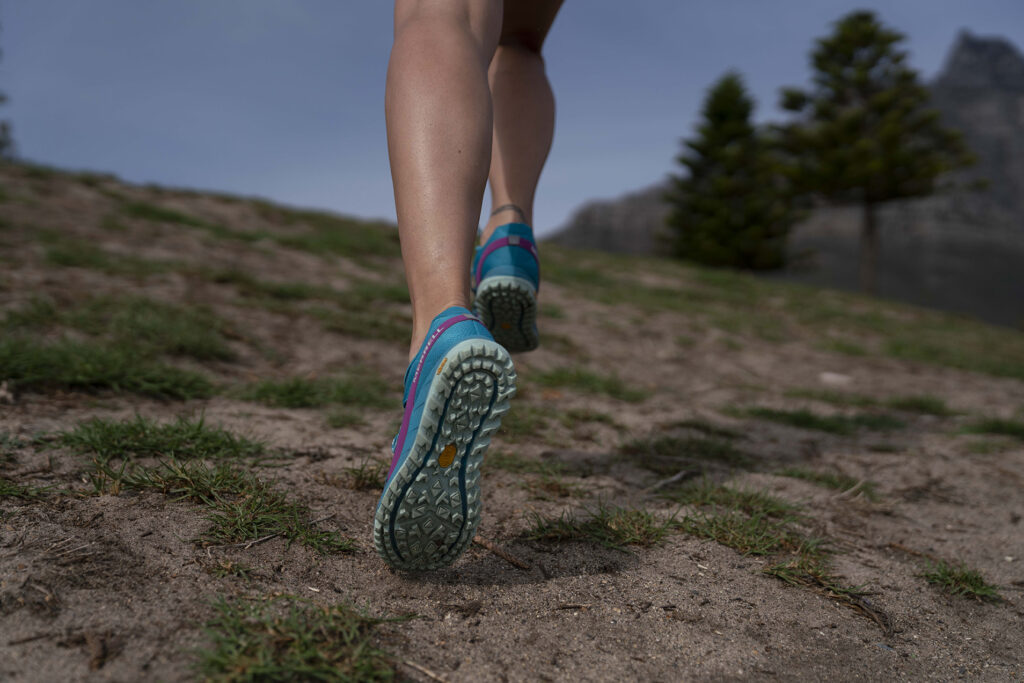Hills may loom large and daunting in a runner’s path. But take on the challenge to climb them and you’ll find a pot of gold on the other side: a more powerful, efficient stride, which can net you faster times.
“Physically, training on hills builds muscle strength,” says running coach Lisa Levin. “And hill sprints or repeats can help improve running economy, which translates into less energy expended over the course of a longer distance race.”
Coaches like Reichmann and Julie Sapper, who coaches with her at Run Farther and Faster, have long touted hills’ benefits. Now, science has begun to catch up to practice, thanks to research by Prof Derek Ferley, director of sports science research and sports performance training at the Avera Sports Institute.
Ferley is a runner himself who’d always incorporated hills into his own half marathon and marathon training but was surprised when a search in the early 2010s returned almost no peer-reviewed proof of inclines’ effectiveness in the exercise science literature. So, he fired up his facility’s research-grade treadmills to fill the gap.
Why? For one thing, uphill intervals’ intensity improves what’s called your lactate threshold. That means your body produces less muscle-burning lactic acid at the same swift paces (plus, you’re better able to buffer the acids you do churn out). Flat intervals did this too, but with hills, you don’t have to move as fast to reap the same rewards, Ferley says.
Shimmying up slopes also asks more of your muscles and nerves than sprinting on the level, speeding the connections between body and mind that make you more explosive. This ability to summon strength swiftly boosts running economy, a measure of how efficiently your hard-working muscles use oxygen to power you forward and a key factor in distance-running success.
Ferley’s spent the past few years tinkering with duration, grade, and pace in hopes of finding the optimal hill-training formula. While he says he’s not quite finished, you can already use his findings—along with coaches’ experiences—to reach new heights.
Here are four workouts you can add to your training routine and how to do them.
For Speed on the Road:
The bulk of Ferley’s research has focused on heading up hills as fast as possible in 30-second bouts. These speedy climbs work similarly to plyometric exercises that build explosive strength and train your muscles to fire more quickly and forcefully on any type of terrain, he notes.
The workout: 30-second hill sprints at a 5% to 10% incline
Do it: Warm up with 2-3km of easy running, then do dynamic drills such as high knees, skips, and lunges before beginning the incline. Take each 30-second hill repeat at a nearly all-out speed (at about the 25-second mark, you should be wondering if you’ll make it to 30 seconds). Rest with a walk or an easy jog for 2 to 3 minutes in between. Start with 5 to 8 repetitions and work your way up to 12 to 14.
For Long Trail Runs:
Though not quite as effective as shorter, faster inclines in Ferley’s studies, longer hill repeats still boosted many key fitness factors (including runners’ point of exhaustion). And soldiering through a lengthier ascent prepares you better mentally for more technical courses, he notes.
The workout: 3-minute hill intervals at a 10% incline
Do it: After a warm-up and drills (see above), take the longer repeats at a pace slightly slower than all-out (in Ferley’s testing, it worked out to about 70% of the speed runners could sustain for two minutes). Jog or walk three minutes to rest—or longer if your heart still feels like it’s pounding—then repeat. Start with 2 to 3 repetitions and work up to 6.
For Better Biomechanics:
Use even shorter uphill charges to practice better form without wearing yourself down, advises Jim Walker, Ph.D., sport science director at The Orthopedic Specialty Hospital. Inclines force you to drive your knees high and land with your foot underneath you (versus out in front of you, an error biomechanists refer to as overstriding). As a result, the angle between your thighs when you push off for the next step increases, and more of the energy you generate moves forward instead of upward—making you more efficient while reducing impact forces that may cause injury.
The workout: 10- to 15-second hill repetitions at a 5% to 15% grade
Do it: At the end of an easy 5-6km run, catch your breath before heading uphill. Don’t worry about your pace; instead, focus on form—running tall, swinging your arms from your hip to your chin, and squeezing your glutes. Walk back down and rest until you’ve completely recovered, then go again. Start with 5 to 6 repetitions and work up to as many as 20—the last one should feel just as springy as the first, Walker says.
To Crush a Hilly Course:
Strength and efficiency help, but racing well on rolling hills also requires discipline and smart pacing, say Reichmann (who’s run the notoriously undulating Boston Marathon). You can practice by doing your long runs on a route mimicking your racecourse, or with a session that pushes the pace after a series of climbs.
The workout: 60-second hill repetitions at a 4% to 5% grade, followed by race-pace kilometres.
Do it: Warm up for 3-5km, then do 6 to 8 hill repeats at an effort of 7 out of 10. Jog downhill for the recovery. Take 1km easy (more advanced runners can skip this step) then run 2-3km at goal race pace before a 1km cool-down. “This workout fatigues fast-twitch muscle fibres on the hills, requiring recruitment and development of slow-twitch muscle fibres to hold race pace after the hill repeats,” Reichmann says.
Pro Tips
Don’t Diss the ’Mill: Most modern treadmills offer a perfectly feasible alternative to outdoor hills, especially for runners who live where it’s flat. Plus, you can programme them to mimic the profile of your goal race course, Walker points out. Choose a machine that’s in front of a mirror and you can keep tabs on your form—your chest should stay tall, and your arms shouldn’t cross the middle of your body.
Descend with Care: Going downhill can burn out your quads quickly—unless you practice. Incorporate descents into your training too, especially if you’re targeting a hilly race. On your way down, relax and lean forward from the ankles (leaning backward, while instinctive, is akin to tapping the brakes, increasing the impact on your legs). Looking down toward your feet can help, Sapper and Reichmann say.

